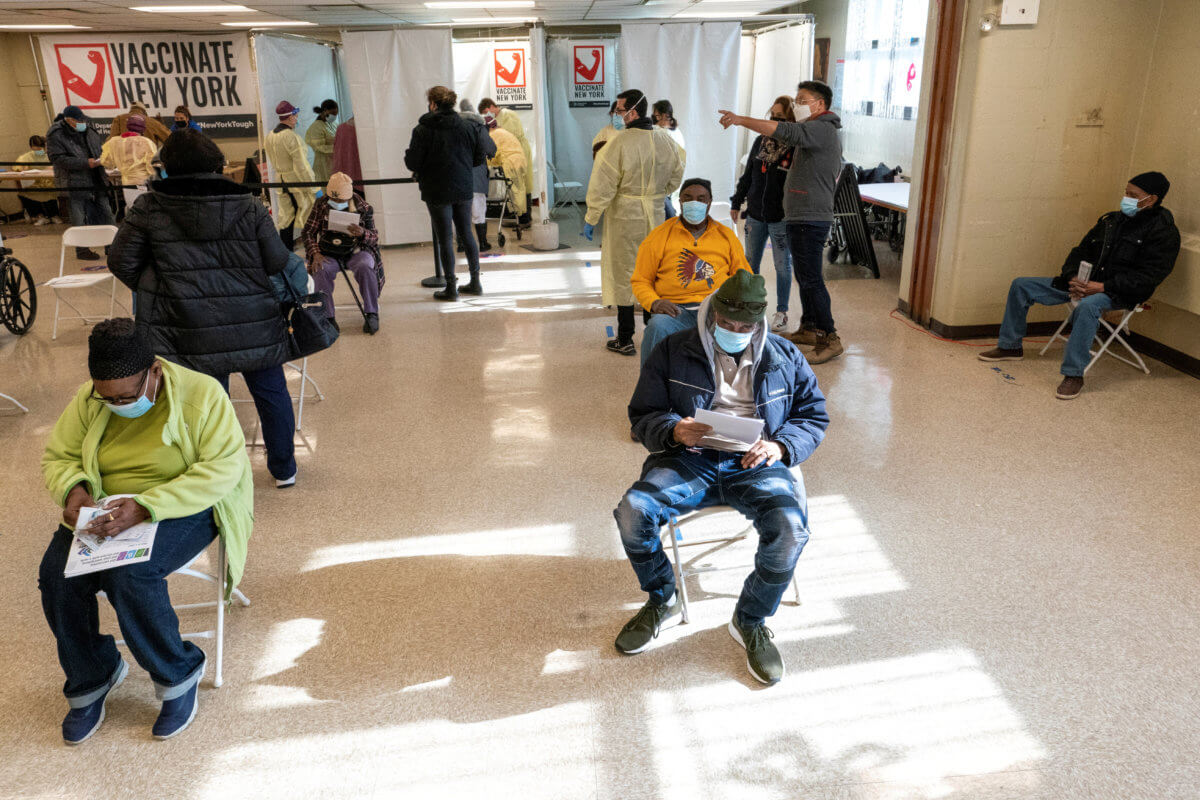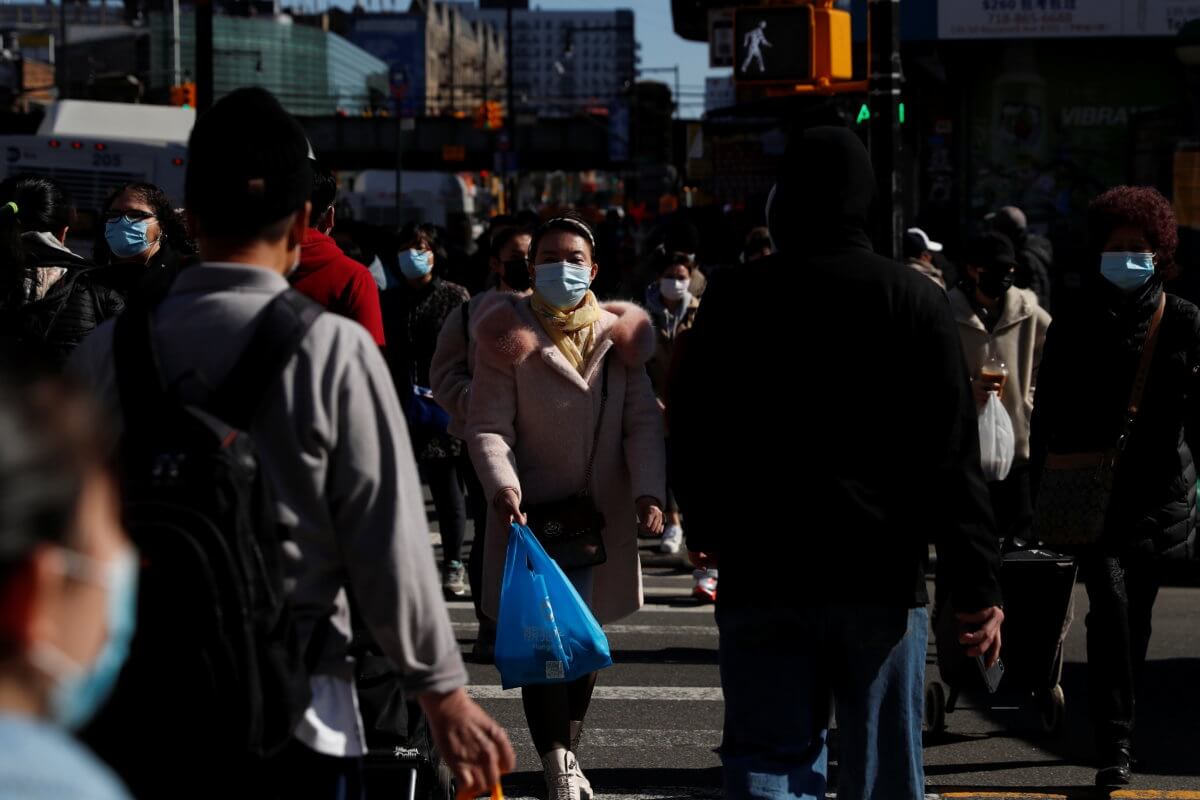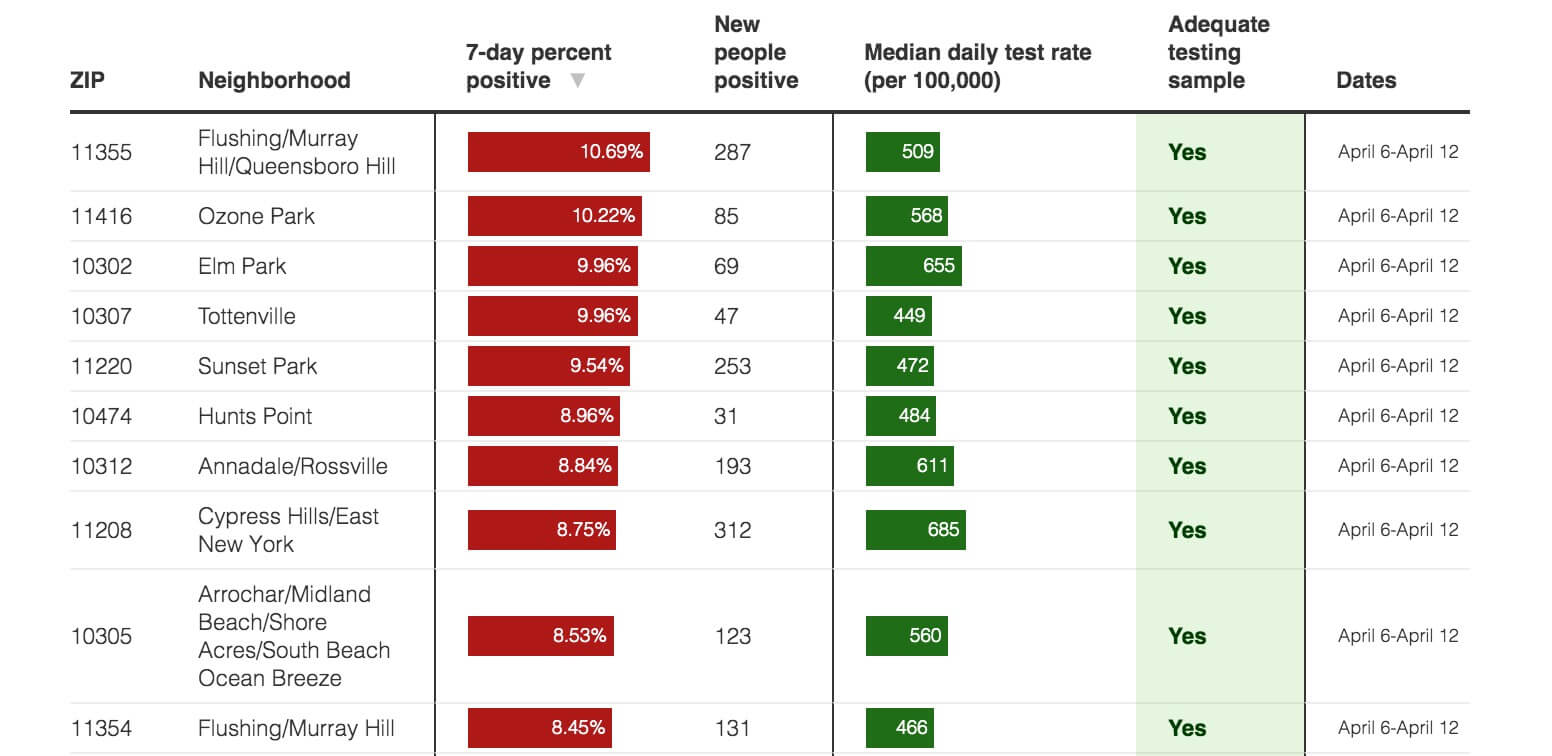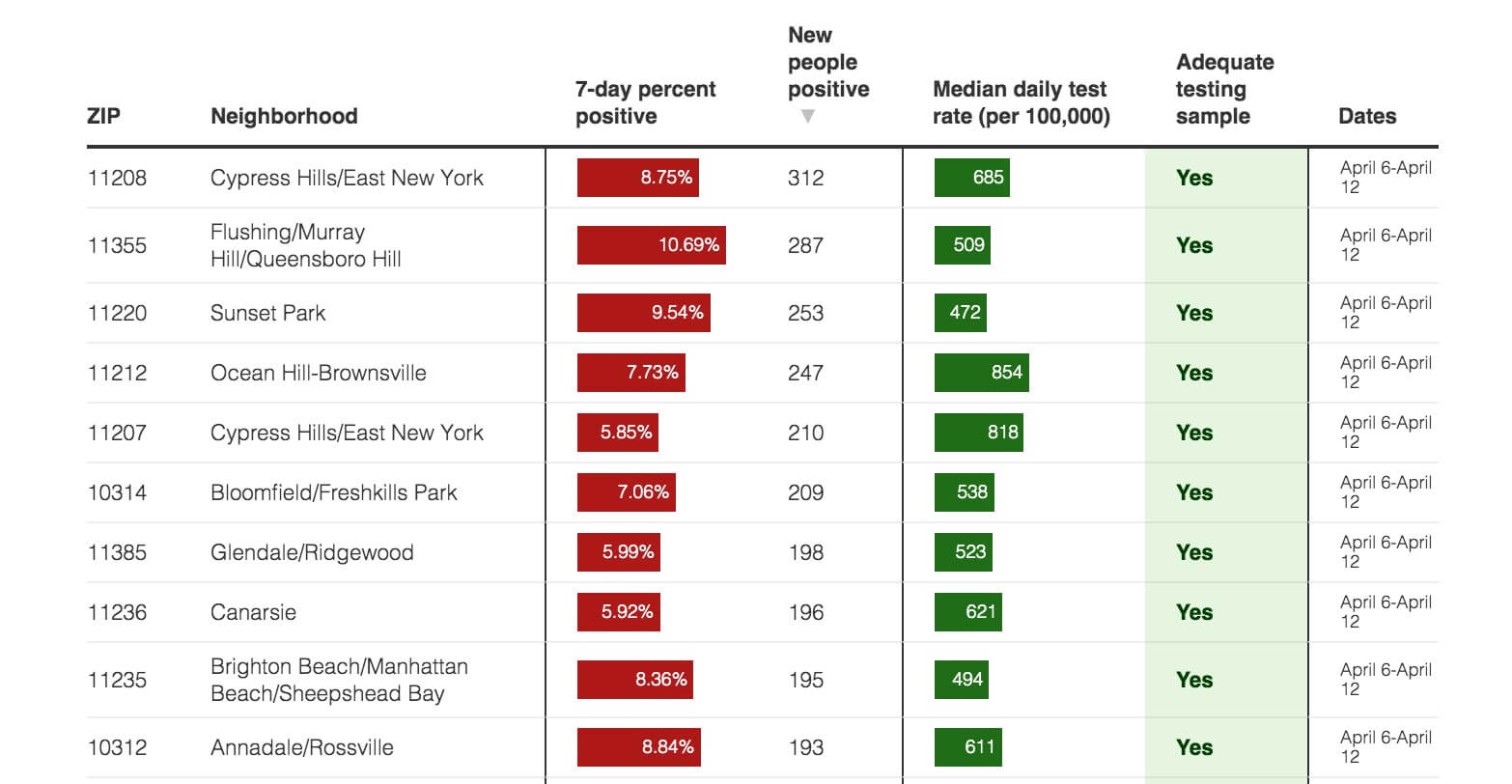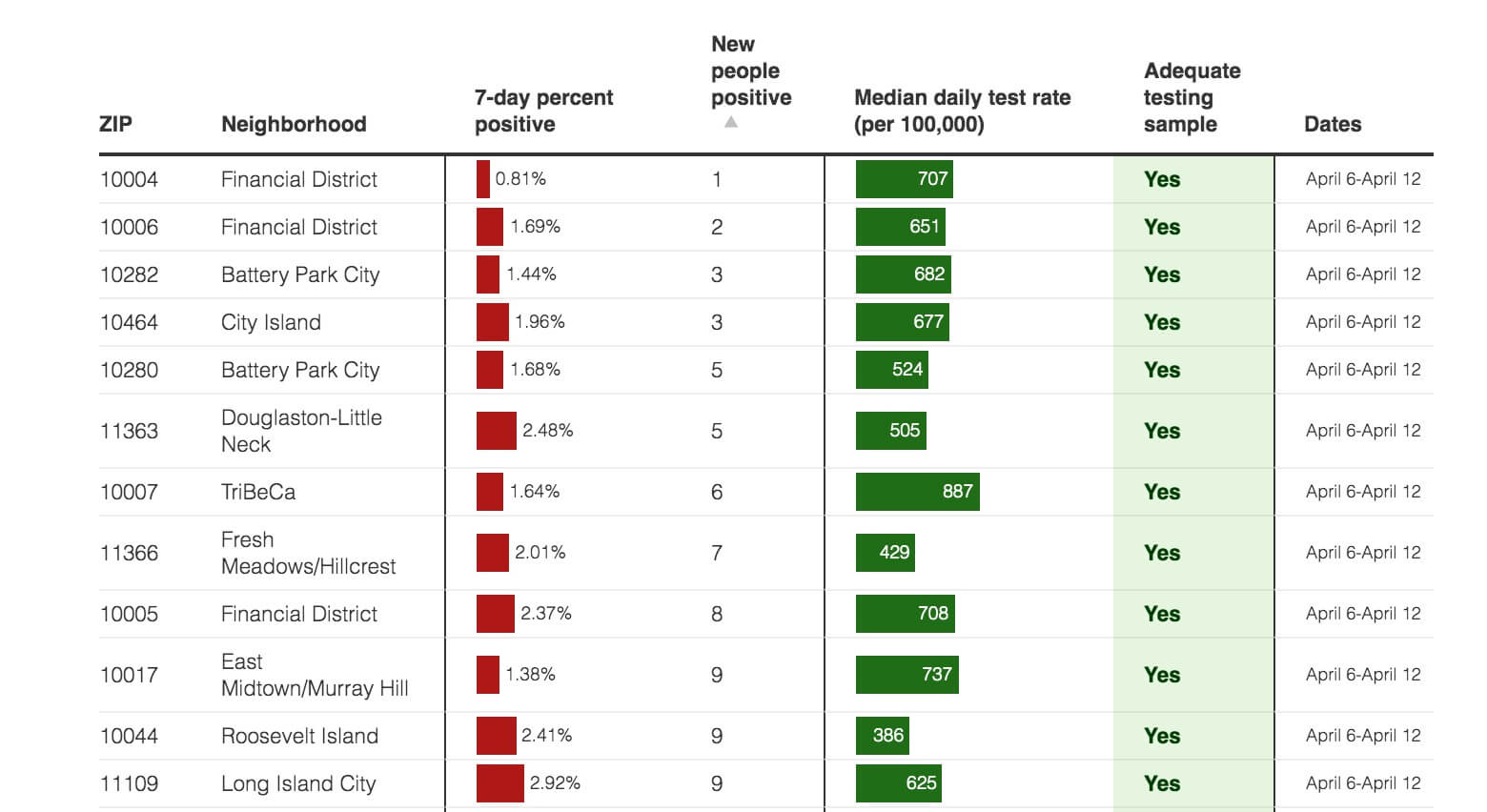Mayor Bill de Blasio addressed the increasing spread of COVID-19 variants throughout the city at a press conference Wednesday morning, confirming that the newest variant discovered in Washington Heights spreads faster than the original virus.
NYC's Senior Advisor for Public Health, Dr. Jay Varma, said that two mutants B.1.1.7 (a.k.a. the UK variant) and B.1.526 (Washington Heights), account for 51% of all cases in the city right now. He said the preliminary analysis on B.1.526, which was first reported in February, indicated that it is more infectious than the founder strain of the coronavirus, which was first confirmed in New York a year ago this month.
So far, health officials don't believe that this new variant strain causes more severe illness or reduces the effectiveness of vaccines, but it poses a health threat merely by spreading faster.
To break all that down further, Health Commissioner Dr. Dave Chokshi said that the New York variant accounted for approximately 39% of all cases in the most recent week, up from 31% the week prior; the B.1.1.7 strain increased to 12% of all samples, from 8% the previous week.
That means the New York variant is circulating at three times the level of the UK strain.
Cases of the B.1.351, which was first spotted in South Africa and was previously detected in Nassau County, or the Brazil-originating P.1 variants have not been found in the most recent data.
De Blasio was upbeat about the potency of vaccines against the variants. Scientists think the current slate of shots will initially protect against all of these emergent strains, but varieties carrying certain mutations—namely one called E484K—can partially bypass our current immunity. This pattern suggests that these variants might more quickly wear down our protection over time, necessitating the need for more frequent booster shots or updates to vaccine formulas.
"So far, thank God, what we're finding is that variants are not posing the worst kind of problems we might fear—for example, a variant that is more deadly, we're not seeing that, a variant that is vaccine-resistant, we're not seeing that," he said on Wednesday morning. "What we are seeing is variants that are more infectious, and therefore spread the disease more, and that's a real issue. But the good news is we have the strategies to fight back."
Both the mayor and Mitchell Katz, the CEO of NYC Health and Hospitals Corporation, framed the situation as a race against time—and the vaccine rollout. At the hospital level, COVID-19 deaths continue to decline despite the increase in variants, Katz added, emphasizing that the vaccines are working.
"The way that I understand is that we've been very good about vaccinating those people at greatest risk," Katz said. "So, the most dramatic drops in mortality and serious hospitalizations are in the nursing homes, which is also where we saw the highest death rates last March and April."
De Blasio, Varma, and Chokshi all reiterated that people should continue wearing masks, maintaining distance, washing hands, getting tested, and most importantly, getting vaccinated when it is possible. Vaccination is "the number one weapon in the war against these variants," de Blasio added.
On Monday, CDC officials said two-dose versions of the COVID-19 vaccines—such as those from Moderna and Pfizer—offer better protection against the variants than one shot, according to CNN. But the Johnson & Johnson option doesn't lag far behind.
"In the match between vaccines and variants, let's not give the variants the upper hand," Chokshi said. "We must recommit to these public health precautions. Think of it like checking your safety belt and adjusting your mirrors in your car as you head into a winding road. And I'm hopeful this will be the last leg of our journey through this pandemic."
So far, 2,448,892 total doses of the vaccines have been administered throughout the city. The mayor noted that the city's rough estimate is that more than half the city's residents are currently eligible to get vaccines, and he took a guess that the earliest that all NYC residents will be eligible for the vaccine won't be until late May or June.

